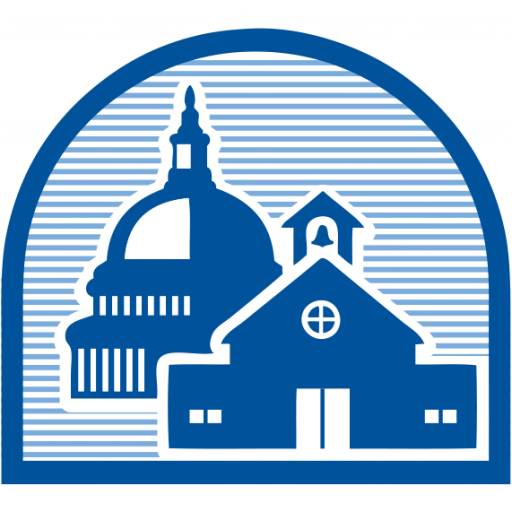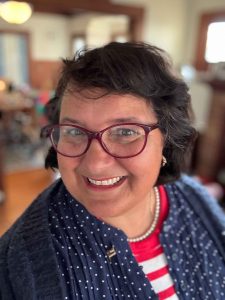Snapshot
Teacher Name: Karina Chapman
School Name: Fortuna Middle School
School Location: Fortuna, California
No. of Years Teaching: 25 (plus two substituting)
Subject Currently Teaching: American History (5 sections; 8th grade)
Education: M.A., American History
Memberships: National Council for the Social Studies (NCSS); Phi Alpha Theta National History Honor Society
Karina Chapman teaches five sections of American History to 8th graders at a middle school in Fortuna, California.
Fortuna is a remote town located nine miles inland from where the Eel River meets the Pacific Ocean and about 250 miles north of San Francisco.
Although Chapman—whose students affectionately call her Mrs. C,—is originally from California, years ago, she and her husband relocated to Maine where she taught at Noble Middle School in North Berwick, Maine.
However, California called her back to care for her 96-year-old father who lives in a neighboring town. “I wanted to be here to help my brother take care of meals and appointments and just visit Dad, so he can stay in his own home,” she says.
Reflections on How Teaching Has Changed
With 25 years’ experience teaching from coast to coast, Chapman says the vocation has changed quite a bit since she began her career in the 1990s.
“Being a teacher in 1996 was completely different without the technology we have today,” Chapman says. “Kids were more engaged, knew how to play, had much longer attention spans, and did stuff outside of school besides playing video games.”
Like it or not, the growth and development of technology—the internet, texting, social media, cellphones—has impacted the vocation of teaching dramatically.
Thanks to AI chatbots—ChatGPT, Grok, etc.—it’s much easier for kids to complete a homework assignment without much, if any, critical thinking on their part.
“Fifth graders wrote five-paragraph persuasive essays in the 1990s, whereas today it can be a struggle to get kids to write just a paragraph in history class,” Chapman says.
The sentiment probably rings a bell for many of today’s teachers, who are expected to do much more than before.
“One of the biggest changes is the sheer volume of responsibilities that teachers have now,” Chapman says. “There is so much data to collect and new programs to learn and implement. As expectations for teachers change, so do their jobs.”
The political atmosphere is vastly different, too, Chapman says.
How Polarization Has Affected Education
Much has been written about how polarization has deepened in the U.S., a result of the ever-deepening divide between the right and on the left.
“Teachers went from being just teachers to being heroes during Covid, and now to almost being the enemy in some instances,” Chapman observes. “When a state recommends reporting teachers who say anything about a specific topic, for example, there is something very wrong in society.”
Parental demands are becoming increasingly common, placing an additional burden on teachers who were already underpaid and underappreciated. Now, teachers are being asked to do more.
“Now we have to navigate what is currently happening with the country politically in terms of what can and cannot be taught to their children,” Chapman says. “When a small but vocal group of people try to change a curriculum for all students and ban books because of their own beliefs, it negates the rights of others.”
Despite the influence of polarization, Chapman has managed to maintain balance in her classroom management.
“I tell the kids my job is not to teach them what to think, but how to think for themselves,” she says. “This is why I love SGAP and the Student Forum newsletter.”
“The kids were very interested in discussing Charlie Kirk and the First Amendment right to freedom of speech, and we never once dipped into whether he was right or wrong,” Chapman says. “It was one of my best lessons yet.”


